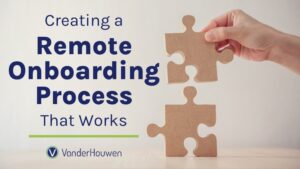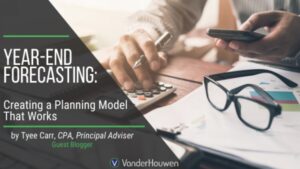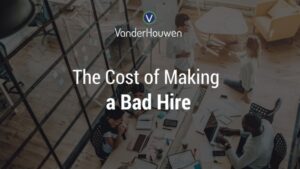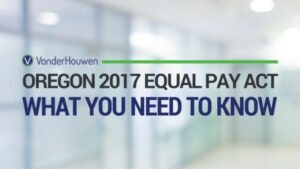Year-End Forecasting: Creating a Planning Model That Works
Year-end in the accounting world is all about closing out the current year but planning ahead is just as important. By creating a planning model ahead of time, businesses can track what they make against the goals they’ve set for themselves and make informed decisions about where to take the company based on that information. Future planning sets realistic expectations for businesses through the coming year and allows leadership to see at a glance what’s working and what needs to be adjusted as the year goes on. It gives them the ability to make quick, informed changes that keep the business running smoothly.
The goal is to have a chart of accounts in your accounting system that matches line for line with your planning model. Additionally, if you are creating a planning model for an established business, then it’s important to make sure the historical transactions have been accounted for. At a minimum, this means having reconciled the accounts and produced reports that can be used to see trends and relationships.
Extra KPIs may seem like a good idea but can bog down your accounting, so streamlining what you track will free up time and space. Besides, who has time to track 100 KPIs that no one pays attention to? Focus on what you will use, and what can benefit your business most when tracking numbers.
Having the history in front of you and evaluating how your business is doing, is key to creating realistic and attainable goals for the future, but so is an understanding of the upcoming year. Think about staff, processes, or even software changes. Some goals will be thrown off during times of restructuring, so create your targets with those moments in mind. Though it’s unlikely all of the assumptions used in identifying targets from KPIs will play out as expected, forecasting the details provides an opportunity to compare expectations against actual results and make planning adjustments as needed.
In your business’ planning sheet, targets like growth rates, margins, and expense ratios can be disaggregated into detailed line items of sales and operating expenses, resulting in a forecasted net total for EBITDA. Some line items may be based on direct inputs rather than inferred from ratios. For example, you could fill in your salary line items using a planned headcount, with expected salaries, including adjustments based on a local salary guide. (Expert tip: make sure your income statement matches line-by-line to the income statement in your accounting system and is maintained on an accrual basis. This will ensure that each line item is forecasted based on when they are expected to occur instead of when cash is received or paid.)
Forecasting cash flow is an extension of forecasting EBITDA. Additional targets, like the timing of customer collections, vendor payments, capital spending, and sources of financing can be used to covert accrual-based EBITDA into cash flow. We recommend this conversion be done in detail so your leadership team can clearly see the effect of collection and payment policies.
What does year-end forecasting look like?
Every organization’s forecast looks a little different, but for many teams, forecasts are documented in a spreadsheet, or workbook of spreadsheets, that showcase the strategic goals and action items of your leadership team in the upcoming months. By utilizing the past 12 periods of metrics (including income, cash flow, and other Key Performance Indicators), you’ll have a better idea of what needs to change when you plan for the next twelve. Start setting your organization up for success this year with these five expert-approved steps for building a strong and efficient end-of-year plan:Scrub your accounting.
Start off evaluating your chart of accounts while considering how the categories of income and expense will be used for the next twelve months. You can simplify your accounting by consolidating accounts into the categories that you actually use in planning. Companies that have operated for several years may find their chart of accounts bloated from adding levels of detail. Creating your planning model is a great opportunity to clean that up.The goal is to have a chart of accounts in your accounting system that matches line for line with your planning model. Additionally, if you are creating a planning model for an established business, then it’s important to make sure the historical transactions have been accounted for. At a minimum, this means having reconciled the accounts and produced reports that can be used to see trends and relationships.
Identify your KPIs.
Once the historical books are clean, it’s time to identify your Key Performance Indicators (KPIs). KPIs are classic metrics common to all businesses such as growth rates, margins, and expense ratios that can be calculated and plotted over the prior twelve months (or through previous years if you have the data). Focus on KPIs that you’ll actually use, honing in on data that you know your leadership team will want to see. What pieces of data will paint the best and easiest-to-digest picture? Select metrics that will give a good high-level understanding of the company’s status.Extra KPIs may seem like a good idea but can bog down your accounting, so streamlining what you track will free up time and space. Besides, who has time to track 100 KPIs that no one pays attention to? Focus on what you will use, and what can benefit your business most when tracking numbers.
Set your targets.
At their core, operating businesses maximize their cash flow by collecting on sales while minimizing expenditures. While that may seem like a no-brainer, often successful businesses maximize their cash changes on a business-to-business basis. So which approach is right for your unique company? With historical trends and past metrics in hand, determine which KPIs best reflect the success of your plan overall and plan out next year’s goals.Having the history in front of you and evaluating how your business is doing, is key to creating realistic and attainable goals for the future, but so is an understanding of the upcoming year. Think about staff, processes, or even software changes. Some goals will be thrown off during times of restructuring, so create your targets with those moments in mind. Though it’s unlikely all of the assumptions used in identifying targets from KPIs will play out as expected, forecasting the details provides an opportunity to compare expectations against actual results and make planning adjustments as needed.
Forecast EBITDA and cash flow.
Improving cash flow is the ultimate goal of the planning model. As such, the most significant influence on operating cash flow is earnings. Many accountants favor modeling earnings as EBITDA (that is, earnings before interest, tax, depreciation, and amortization) because interest and income taxes are highly dependent on entity structure and financing, rather than the specific results of business operations. Likewise, depreciation and amortization are non-cash charges, whose patterns shouldn’t influence planning. Capital spending is certainly an element of planning, but it’s hard to see how depreciation calculated either under tax rules or generally accepted accounting principles, sheds much light on your intended schedule of capital expenditures.In your business’ planning sheet, targets like growth rates, margins, and expense ratios can be disaggregated into detailed line items of sales and operating expenses, resulting in a forecasted net total for EBITDA. Some line items may be based on direct inputs rather than inferred from ratios. For example, you could fill in your salary line items using a planned headcount, with expected salaries, including adjustments based on a local salary guide. (Expert tip: make sure your income statement matches line-by-line to the income statement in your accounting system and is maintained on an accrual basis. This will ensure that each line item is forecasted based on when they are expected to occur instead of when cash is received or paid.)
Forecasting cash flow is an extension of forecasting EBITDA. Additional targets, like the timing of customer collections, vendor payments, capital spending, and sources of financing can be used to covert accrual-based EBITDA into cash flow. We recommend this conversion be done in detail so your leadership team can clearly see the effect of collection and payment policies.
Compare plan to actual.
A significant benefit to reflecting your business plan financially via a spreadsheet is the ability to make comparisons to your actual results. If your accounting matches on a line-by-line basis, you can easily make comparisons between your accounting income statement (P&L) and your planning model. You can take it a step further by calculating your KPIs and income to cash flow to compare your forecasted to actual numbers. These comparisons are designed to help you challenge assumptions and re-evaluate your plan. This is especially helpful if done monthly after closing your accounting books; that way your plans can be adjusted as needed and you have an updated version of it available each month. The components to your planning model, once set up, would include:- Prior twelve months of actual income statements (EBITDA) on an accrual basis.
- Prior twelve months of cash flow reconciled from EBITDA.
- Prior twelve months of KPIs.
- Planning targets (forecasted KPIs) for the next twelve months.
- Forecasted twelve months of income statements (EBITDA).
- Forecasted cash flow reconciliations from EBITDA.
- Month-by-month plan to actual comparisons.
Are you ready to add new members to your team in the coming months? We can help.































































































































